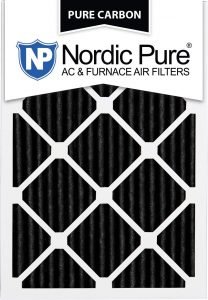
We all know what overwhelm feels like, because we’ve all faced it throughout our lives. And one of the best ways to cut down on overwhelm for me, is to have a plan laid out. A plan that takes specific steps in the order of importance usually is the way I work best. And so that’s exactly what I do with all my healthy house clients. We work through their goals for their home and health and break it down into the most impactful but simple tasks first.
It’s kind of like a Venn diagram of ways to impact the health of your home and simple, free, tasks you can do at home. And what ALWAYS ends up in the middle of that Venn diagram for the winning task is ventilating your home. But what is that!? It can be a bit of an ambiguous term, and so let me break it down for you: ventilating your home is the fancy way of saying air it out, or letting it breathe. Essentially opening it up and letting the fresh, less toxic air from outside dilute your toxin filled indoor air.
It’s the BEST and most impactful way to IMMEDIATELY reduce toxins inside your home in most cases. And believe it or not, there are more ways to do this than just opening a window here and there. The way I teach my clients it becomes a permanent habit in their repertoire of healthy home tools they use. It’s quite literally the building block I use to help them create an environment at home that supports their own health and wellness.
Indoor Air Quality Factors
As always, I want to teach you the “why” behind this healthy house habit, and not just the habit itself. I always think that when you have complete understanding as to why a habit works to support your health, you’re more likely to do it on a regular basis.
First, it’s important to know that homes over the last few decades have become increasingly more energy efficient. And while this is a total win for our energy use, indoor air quality has been affected because of it. Basically, the indoor air that becomes filled with toxins (mold, CO2, particulate matter, heavy metals, pesticides, radon, biological allergens and VOCs) has no place to escape your home. (STUDY) It’s stuck inside the energy efficient cocoon that we’ve created, leaving our bodies surrounded by toxins inside.
Another factor that comes into play is that as a society, we spend more time indoors now than ever before. Most of us spend about 90% of our days inside, and the majority of that time is spent inside our home. And modern habits that include bathing and showering indoors have also begun to affect our indoor air quality, raising off gassing levels during these activities. (STUDY)

While we’re talking about our habits and homes, how can we forget all the items we put into our homes. Modern homes contain a slew of textiles, cushions and carpet — all of which contain pesticides, toxins and VOCs. (STUDY). Home furnishings and building materials alike are some of the most toxic things we bring into our homes, however the majority of society is unaware of the toxins that come with these things. And once these items are inside, they can remain inside our home for months or years. Because these materials are created to withstand sunlight exposure and extreme temperatures, they don’t ever truly break down, but continuously move around our home in the form of dust.
And while we’re talking about toxic dust — let’s add that to the list. Household dust is filled with toxins from inside (from carpet, foams and textiles) as well as toxins from outside (biological pollutants, pesticides and heavy metals). Without properly cleaning your home and removing dust on a constant basis, the dust becomes airborne and it is inhaled by those inside our homes. Removing dust is more than just vacuuming, it’s also cleaning filters and window screens and getting dust out of corners and off of places we often forget about.

Your Health is Affected By Indoor Air Quality at Home
Obviously, the reason we care so much about indoor air quality at home is that it’s negatively impacting our health and wellness right now. And the truth is, many of us are completely unaware of this fact. Indoor air that contains toxins and pollutants that naturally occur in our homes has been shown to negatively affect the immune system and respiratory system alike (STUDY)
Each toxin that is inside your home can negatively impact your health and wellness, depending on which toxin is present.
Toxins like lead have been shown to accumulate in the blood affecting muscles, joint, memory and concentration. In children it has been linked to learning disabilities, memory loss and hyperactivity. (STUDY)
VOCs are usually labeled as carcinogenic, elevating the risk of particular kinds of cancer in the body. (STUDY)
Other toxins like dioxins are disruptive to the endocrine system and in turn can cause issues with the reproductive system, growth, thyroid and elevate the risk of certain types of cancer. (STUDY)
Not to mention all these toxins put a huge strain on our liver as our bodies have to detoxify all these things that enter our system through inhalation, skin absorption and ingestion. Quite often these toxins have an extremely long half life, meaning they stay in our systems for long periods of time, allowing the toxins to build up to very unhealthy levels. This build up is referred to as body burden and causes other systems within the body to malfunction.

Home Ventilation Steps
Home ventilation doesn’t have to be complex at all. It’s simply getting into the habit and sticking with it. For starters, I suggest adding a task to your to-do list for the day, or using phone reminders to help you remember these steps. After a while, it becomes second nature and your home will be properly ventilated constantly.

- Open Windows
- Run HVAC Fans
- Use Vented Fans
- Turn on Ceiling Fans
You can get the details on each of these steps (how long, how often to do them) in my new course The Healthy Home Blueprint. I’ve got a WHOLE lesson devoted to properly ventilating your home.
Tools to Help
Another part of home ventilation is making sure the air inside is as clean as possible. These tools will help reduce toxins inside your home, which will make ventilation even more efficient.
Cleaning Schedules: Manually removing dust through vacuuming, mopping and wet-dusting is one of the most effective ways to remove toxins from your home. House dust contains toxic particles from carpet, furniture and textiles around our home (not to mention pesticides and bacteria). Removing dust regularly means you’re also removing toxins from your space and air at the same time.
High Quality Air Purifier: Air purifiers pull your indoor air into the unit through a fan. The air then travels through a series of filters, which removes dust particles, microbes and toxins from the air. Another fan then pushed the air back out into your home. As this sequence happens over and over again while you run your purifier, it removes more and more particles each time, leaving you with purified indoor air.
I trust MedifyAir for our indoor air purifiers, and so does our school district. They’re air purifiers are extremely affordable and also high quality (which can be a hard combination to find). We use the MA-40 in our common spaces and each bedroom has the MA-15 purifier. (Also use code HHOTB15 for $15 off sale prices)
Indoor Air Quality Monitor: AirThings Indoor Air Quality Monitor is my absolute FAVORITE indoor air quality monitor for homeowners. WIthout knowing what toxins are problematic in your home, you won’t know how to treat your home. HOmes that have high levels of CO2 are going to have a different game plan than homes that have high levels of particulate matter. It’s so important to assess what’s going on in your home before treating the problem. It’s like getting a little check up for your house so you know how exactly how to treat any ailments.
High Quality HVAC Filters: Filters on any of your appliances like furnaces, mini split systems, air exchangers and air conditioners should be replaced frequently. Opt for a carbon filter that has a MERV rating of 12 or higher to reduce as many particles as possible. However, remember that the more you filter out with a high quality filter, the more you’ll need to replace the filter. A filter that is blocked with particles and contaminants not only doesn’t do its job very well, but it can also cause damage to your appliance by reducing proper air flow. I love Nordic Pure Air Filters for my home and get them directly from their site.

By implementing these steps and utilizing these tools on a regular basis, I have NO worry at all that you’ll be able to drastically improve your indoor air quality through proper home ventilation. It’s one of the easiest and BEST ways to begin creating a healthy house right away.







Pingback: 10 Free Ways to Reduce Environmental Toxins at Home
Pingback: Nine Free Ways to Reduce Environmental Toxins at Home
Pingback: Avoid a Sick House and Sick Building Syndrome »
Pingback: 8 Ways to Transform Your Healthy Home & Support Your Health